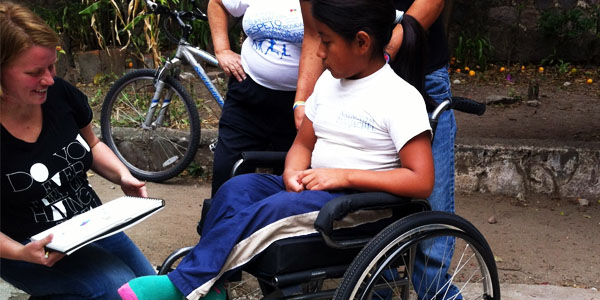Current projects
Wheelchair for Children with Special Needs
Why?
In Guatemala, there is a lack of support for people with disabilities. According to The World Factbook the distribution of income remains highly unequal with the richest 10% of the population accounting for more than 40% of Guatemala’s overall consumption. More than half of the population is below the national poverty line and 15% lives in extreme poverty. Poverty among indigenous groups, which make up 38% of the population, averages 76% and extreme poverty rises to 28%. 43% of children under five are chronically malnourished, one of the highest malnutrition rates in the world.
In addition, mobility equipment for children is very often more expensive and harder to find in places like Guatemala. Parents are often forced to keep their children at home or to carry them for transportation.
For almost a year, The Transitions Foundation in Guatemala has collaborated with Design without Borders to develop a wheelchair for children with special needs. Read more about Trasiciones in our people page. They will be starting an implementation of the product in june/july, with local children, and will therefore need financial support to get the first series rolling….
Photos from the design process can be found in the the informal process gallery, provided by the designers from Design without Borders.

It has been found by the research team that often children are forced to use equipment designed for adults and that does not suit their particular mobility needs.
The design process
Since March 2011, the team at the Transitions Foundation partnered with designers working for Design without Borders (Norway) have embarked in creating an entirely new wheelchair design. They have been focusing on reliability, ease of construction, and economical feasibility. It should serve the special needs of children living with numerous different disabilities in different environmental conditions.
Technicians engaged together with designers in numerous stages of sketching, conceptualization, idea generation and prototyping for this new product. All of this happened in an effort to produce the best possible product for the children who will use the device. Please do visit the informal process gallery where you can find constant updates and extended photo galleries of these activities.

Both designers and technicians went through the entire design process sketching and generating ideas for the pediatric wheelchair, putting both their theoretical and practical experience to use.
Rolling Dreams current status
The Design without Borders / Transiciones collaborative design effort is now nearing completion, yielding preliminary prototypes of the wheelchair and tons of great ideas to be implemented in the future. The Rolling Dream aims to help Transiciones raise fundings to kick-start the production of this wheelchair.
What we need
Transiciones are raising funds to produce a pilot “test run” of these wheelchairs, and Rolling Dreams wishes to support that. They will need to create molds and jigs for serial production. Better molds and jigs could substantially improve the serial production, please visit this section to find out how to help us make this happen.


 Add to Google
Add to Google


